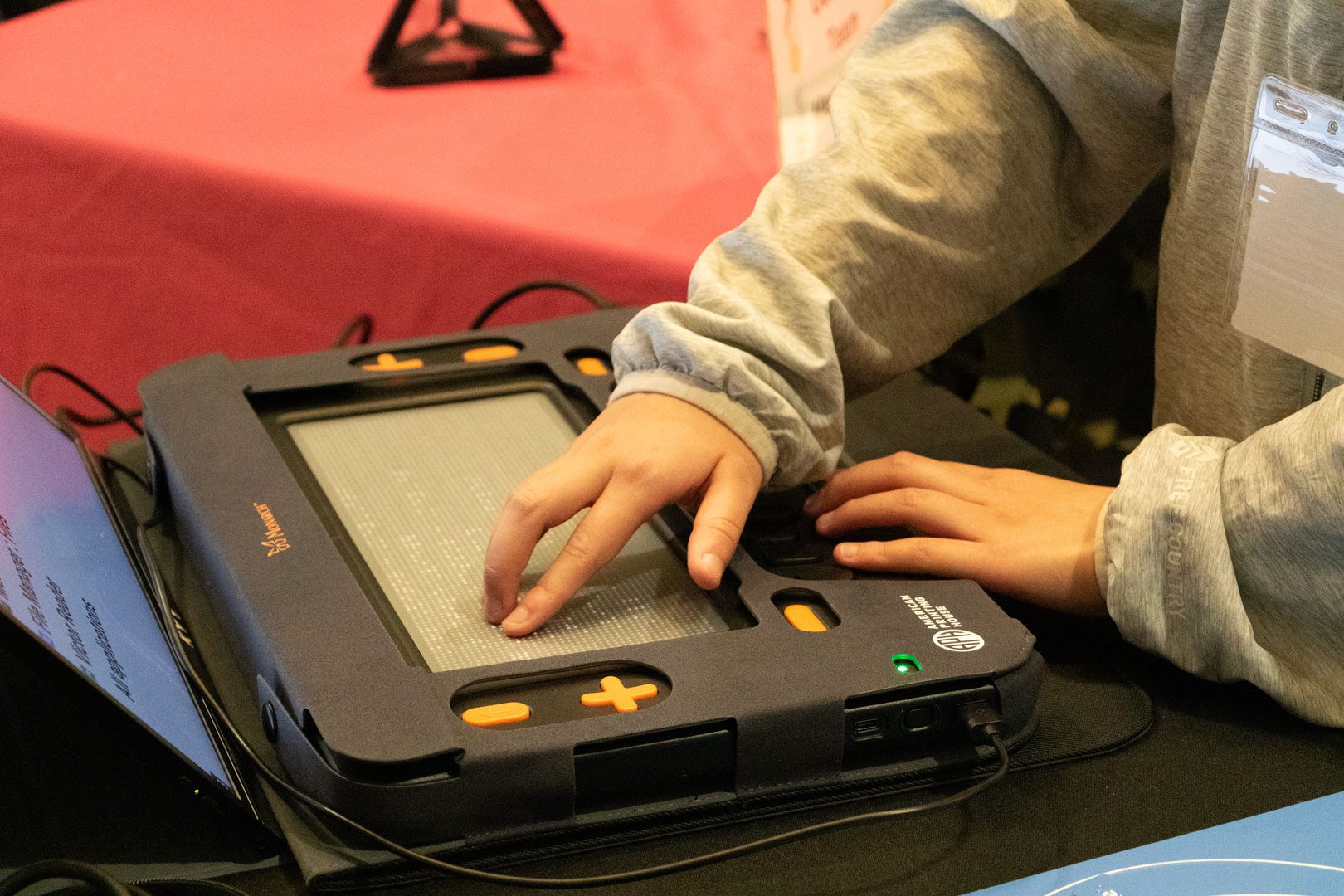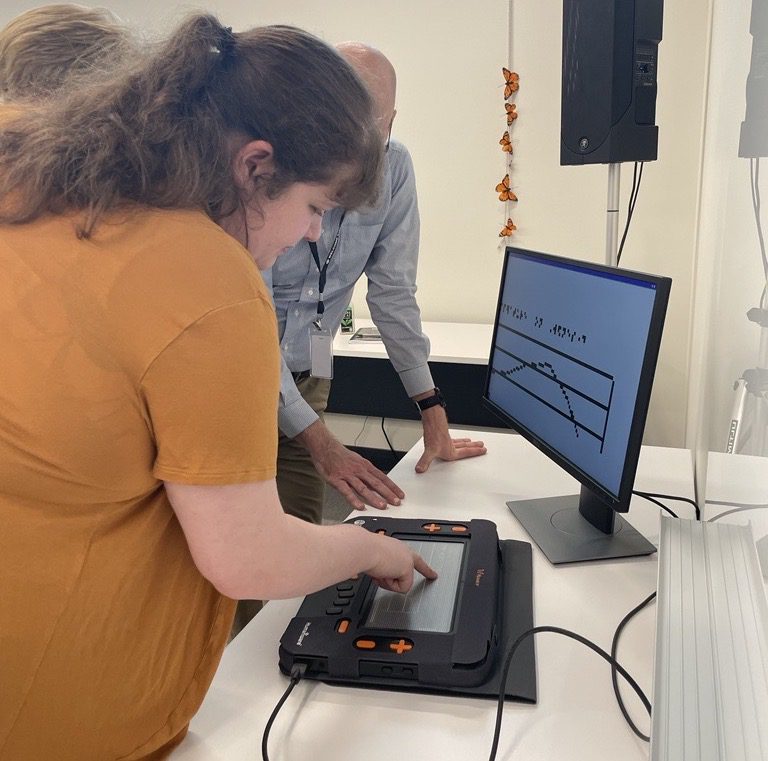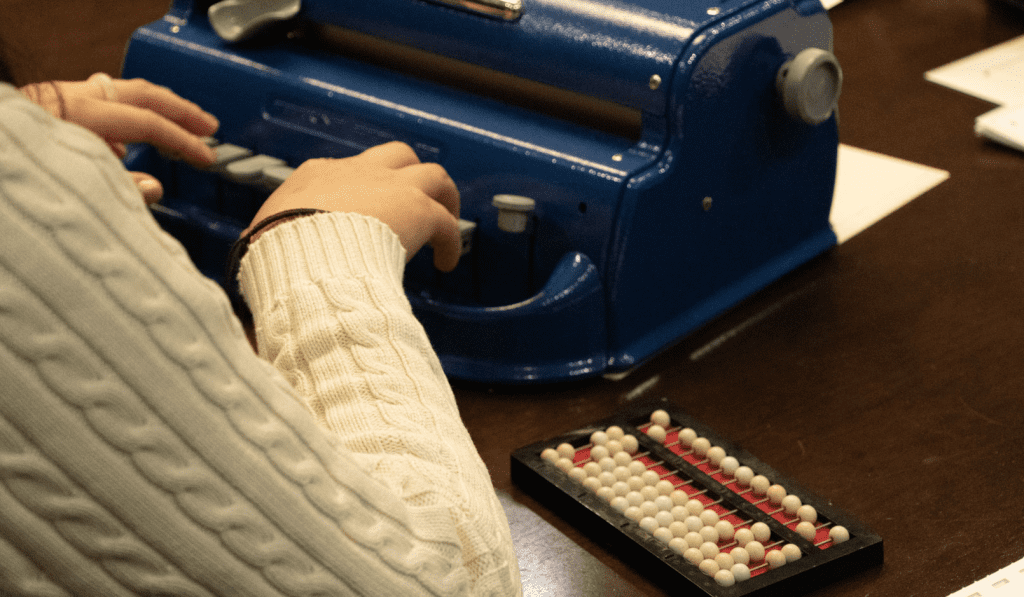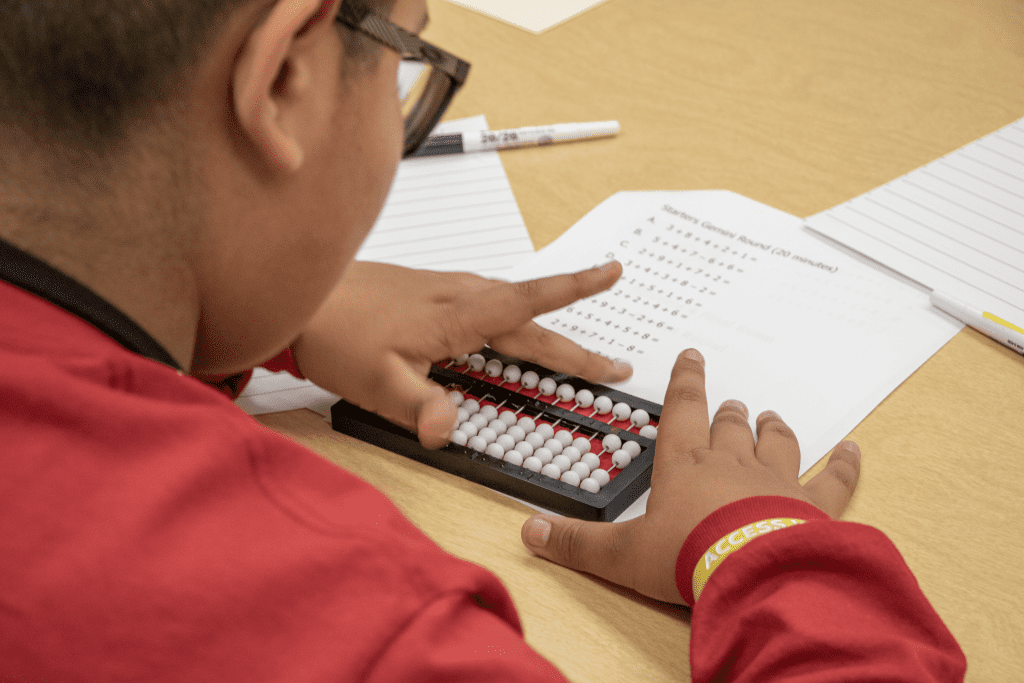Making Math More Accessible: Monarch’s Word Processor

Standardized testing scores among students who are blind and have low vision are very low in STEM subjects. When APH and its partners created the Monarch, their goal was to make a piece of assistive technology that students could use throughout their school day to succeed in every class, especially math.
The Monarch is a 10-line by 32-cell refreshable braille display, which can render lines of braille and tactile graphics on the same surface. With the Word processor, Greg Stilson, APH’s Senior Director of Global Innovation, said, “Students can receive math worksheets and view them in their preferred math braille code. A math translator built into the word processor allows students to write their answers in Nemeth or UEB math inside the worksheet.” In addition, students can go into the Monarch’s graphing calculator, complete their problem or graph, and copy and paste the result into their document. The completed homework can be saved as a .docx file, and the math inside the document will appear as standard print math for the sighted teacher.
Previous notetakers had issues displaying math correctly in Nemeth or UEB for the student and appearing as regular print math for the teacher. Now, teachers can create their worksheet in Microsoft Word using the built-in math editor to input math. “The embedded math in the Word document is math ML. That math ML is immediately translated into your preferred math code when you open the file on the Monarch,” Greg explained. Students can use the math mode in the Word processor by pressing enter with M, write their math, and press enter with M again to leave math mode. The system then translates what was written into math ML for the teacher, allowing them to read correct print math when they receive the student’s saved file. Teachers can also connect the Monarch to a monitor and view the file in real-time as the student works.
When math teachers create worksheets in Word, they are saving the student’s Teacher of the Visually Impaired (TVI) time. Greg said, “TVIs are getting worksheets the day of or the day before class, and what TVIs are doing is six-key entering all of the Nemeth by hand into Duxbury or Braille 2000 before embossing the worksheets.” Now, with the Monarch, this labor is no longer necessary as the student gets an accessible Word document of the worksheet made by the math teacher.
For worksheets containing graphics, students can receive a Word document with the questions from the math teacher and PDFs containing the graphics, created by the TVI or tactile graphics transcriber. To answer the questions, students can open the corresponding PDF in APH’s tactile viewer application, examine the graphic, and open the Word processor to input their answer into the worksheet. This process can also be applied to math tests. Greg said, “What’s really cool is that you’re now not having to have a separate answer sheet alongside a hard copy braille test. You’re filling the test out, just like the sighted kids are right in the same document.”
APH is training teachers across the U.S. on how to use the Monarch and giving the device to participants once training concludes. At the most recent training in Maryland, Leslie said, “The excitement in the room was palpable. Everybody wanted to continue to try different graphing shapes, plotting coordinates, and learning what was coming next. You could feel how much they were thinking ahead and considering where this could fit in and support students. They were excited that the Monarch can handle both UEB and Nemeth Code for math computations.” Teachers who were familiar with other Humanware braille displays also were able to easily transition to the Monarch.
Matthew Brown said, “My students love the graphing function as well! We have been completing trigonometric equations with sine and cosine – and it shows them in real-time instead of me taking 10 minutes to complete a graphic – it makes my life easier, and I can focus on providing instruction and not making the graphic as the instruction has already passed! I could also see the joy in the students face to finally be able to participate fully in his learning and be an active learner using this device in pre-calculus class.”
As the Monarch grows, features will be added and modified in future updates. We are excited for all the possibilities.
Share this article.
Related articles

Making Math More Accessible: Monarch’s Braille Editor and Graphing Calculator
Math is not the most accessible subject for students who are blind or have low vision. Adaptations to activities and...

Summing Up Success: 2024 Abacus Bee Finals
APH’s Outreach Services team hosted close to 100 people in Louisville, KY on March 21-24 for a weekend of competition,...

Calculating Confidence: APH’s Abacus Bee
As STEM careers become more prevalent in the world, it is more necessary than ever to provide students with a...
